Katie Byerly of Cerro Gordo County is also known as Iowa Prairie Girl on YouTube.
I’d like to say that my goal is to see all the wildflowers of Iowa—preferably when they are in bloom. I’m not even sure if that goal is measurable, but I do like to hunt for wildflowers that I haven’t yet seen. I’m still new enough to the wildflower hunting game that I’m am not even aware sometimes of what I should be hunting for.
In 1978, the Northern Monkshood (Aconitum noveboracense) or Northern Wild Monkshood was placed on the federally threatened plant list. I read about monkshood in 2021 on a kiosk at Backbone State Park in Delaware County, Iowa. This kiosk set in motion my three-year quest to find the rare species.
According to the U.S. Fish and Wildlife Service website, Northern Monkshood can only be “found in three disjunct populations: one bordering southwest Wisconsin and northeast Iowa, a second in northeast Ohio, and a third residing in the Catskill Mountains of New York.”
The educational sign at Backbone State Park stated that monkshood was no longer found at Backbone, but one could go to Bixby’s State Preserve (six miles from Backbone) to see this rare wildflower.
The summer of 2021 was my first time to Bixby State Preserve in Clayton County. If you haven’t been, it’s a must-see, one of Iowa’s best-kept secrets of natural wonders. An easy hike crosses a spring-fed creek to the steam blowing ice cave. And then there’s much tougher hikes uphill through the woods around amazing boulders.
Everywhere you look, there are flowers and plants, many you won’t find elsewhere in Iowa. Bixby is a three-hour drive from my home and I unsuccessfully searched for the monkshood three July’s in a row.
Northern Monkshood likes cool damp places. It grows on shaded cliffs, along cold streamsides and algific talus slopes. Wikipedia describes algific talus slopes as a very rare, fragile ecosystem and habitat initially believed to exist only in the Driftless Area of Minnesota, Wisconsin, Illinois, and especially, Iowa. Algific means “cold producing,” while “talus slope” refers to a collection of talus or broken rock which rests near the surface it detached from.
These slopes are usually on the north side of ridges. There are places on these slopes where you can feel the cool air oozing out between the rocks. After a reliable tip, I found the rare Northern Monkshood along a gravel road east of Elkader (Clayton County). In this picuture, my truck is parked along this gravel road. The desired slope is along the passenger side of of the truck.
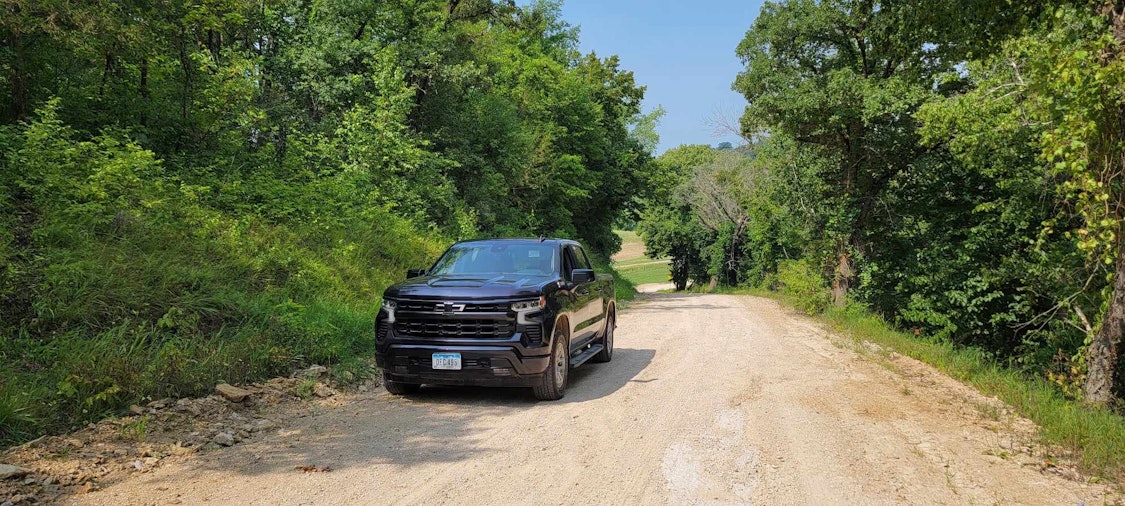
Here is another image of the algific talus slope where the monkshood grows. The rocks are the side of the road where the gentle slope begins. Fish and Wildlife share: threats to northern monkshood are predominately related to habitat loss or degradation. Possible threats include: contamination and filling of sinkholes, grazing and trampling by livestock and deer, human foot traffic, logging, maintenance of highways and power lines, misapplication of pesticides, quarrying, and road building.
You can see in this picture how easily this sensitive site along the side of the road could be damaged.

To me, the plants felt like vines. However, websites describe the stem as erect and tall, but also spindly, reclining, spreading or trailing. Maybe it’s because they were growing on a slope. Here you can see the plant growing at an angle in relation to the road. The rare flowers were growing just one step off the road.
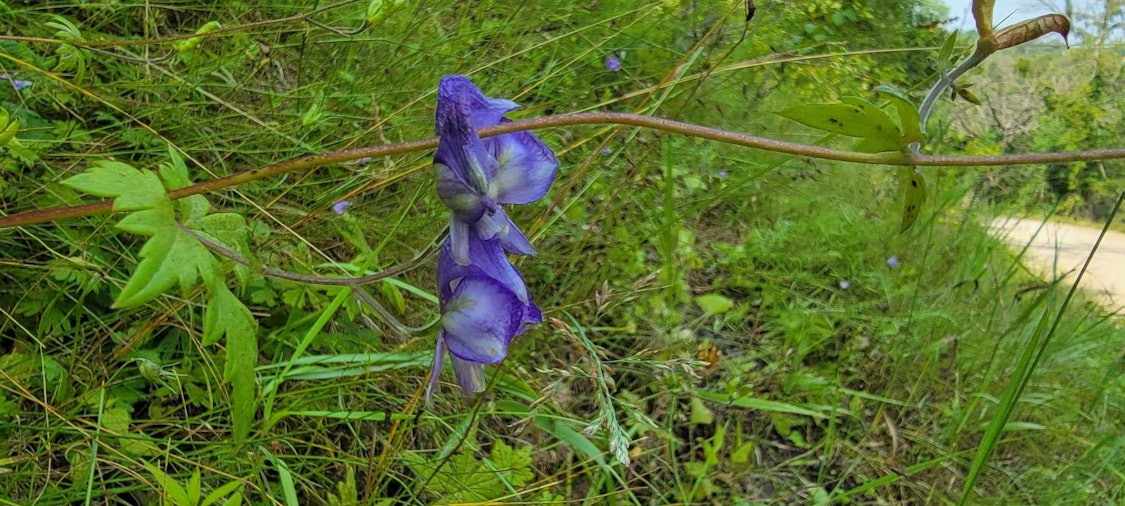

I found the monkshood in the middle of July and was fortunate to find plants in different stages. Here are the bud and sepals before they open.
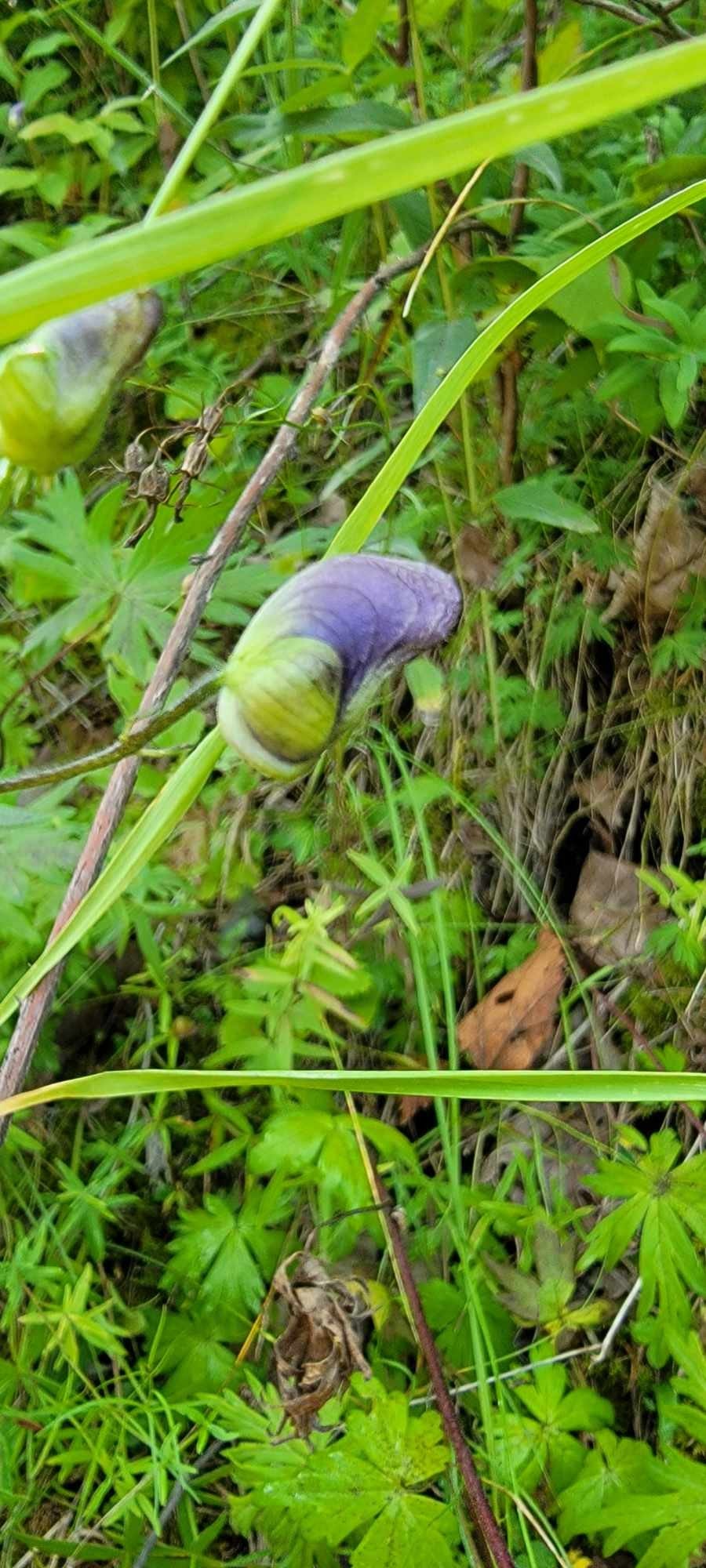
Then they open into a wrinkly, folded hooded flower. The flowers are deep blue or purple. I did not see any white or cream colored flower, but I understand this is possible. The “flower” consists of two petals and five sepals. The sepals look like petals. The top sepal makes up the “hood.”

These images show several flowers together with all the petals and sepals making up the flowers.
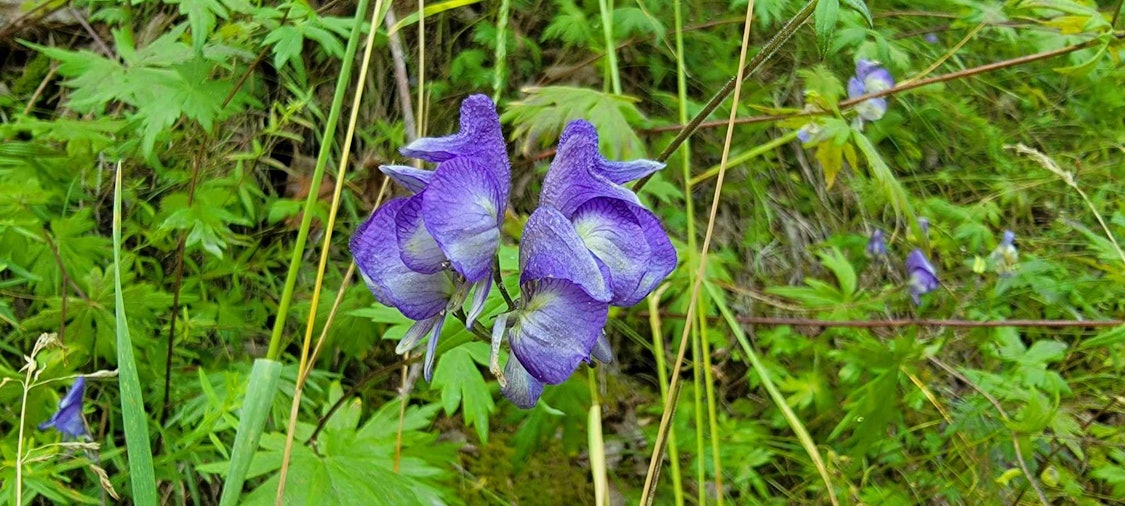

Images from a different angle showing the many stamens of monkshood flowers.
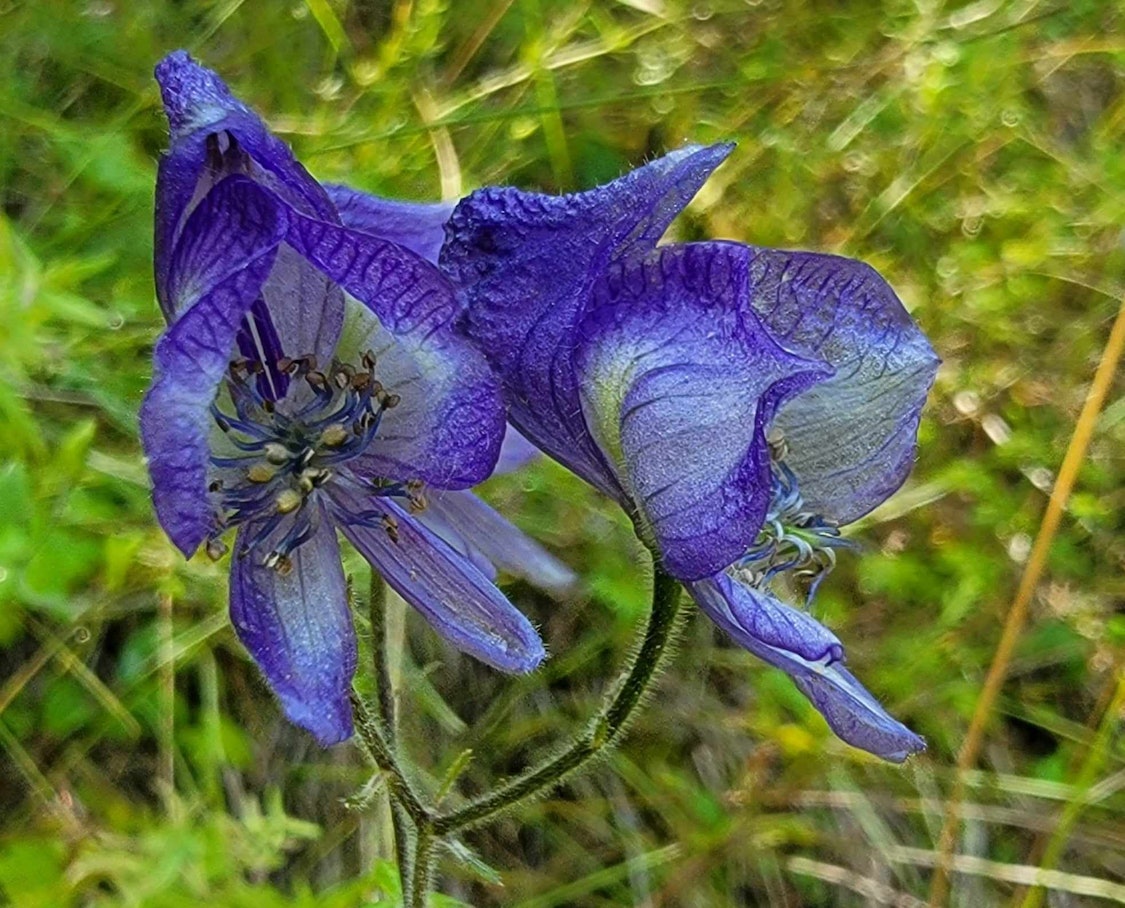
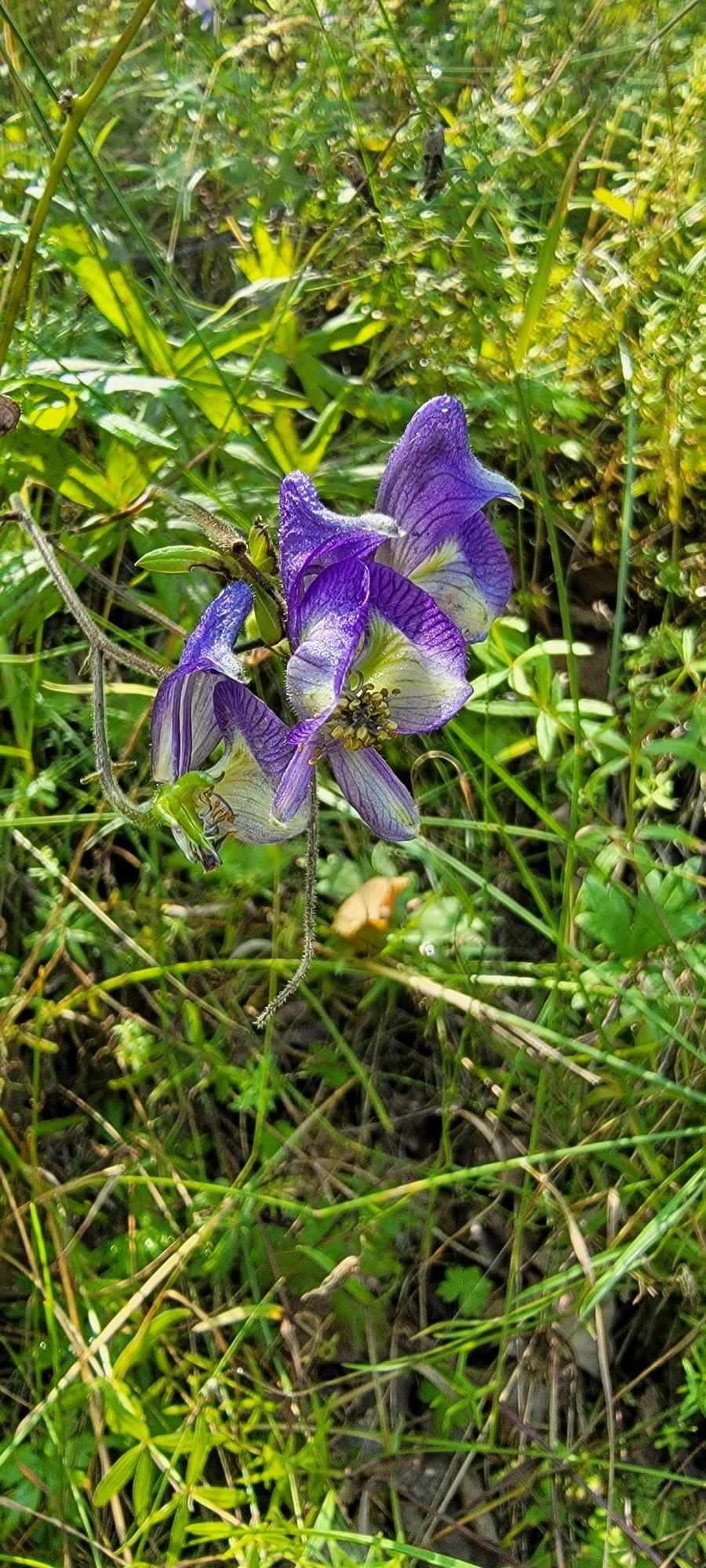
The inflorescence branches and holds far-spaced flowers.
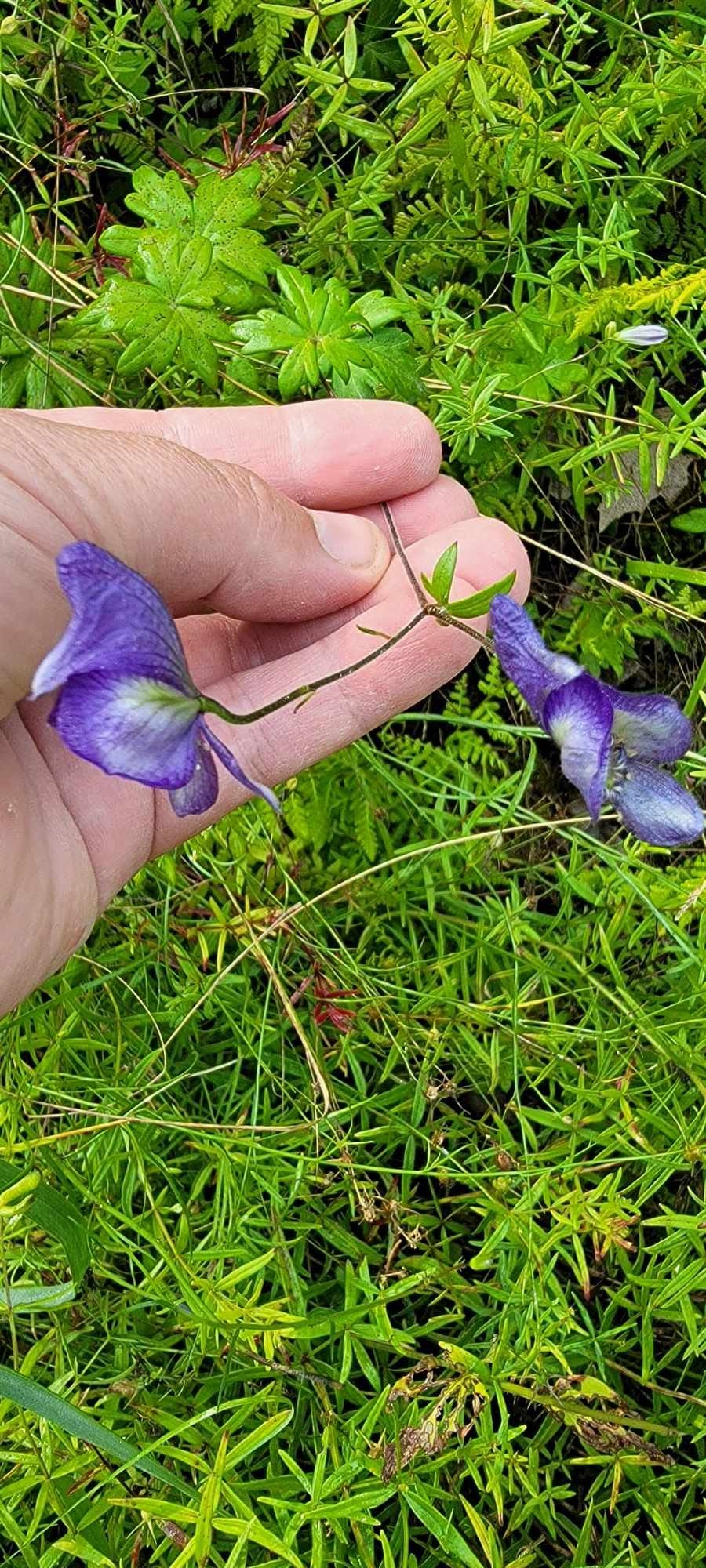
The five-lobed palmate leaves alternate right off the stem towards at the top of the plant. Leaves towards the bottom of the plant have a long stalk/stem.
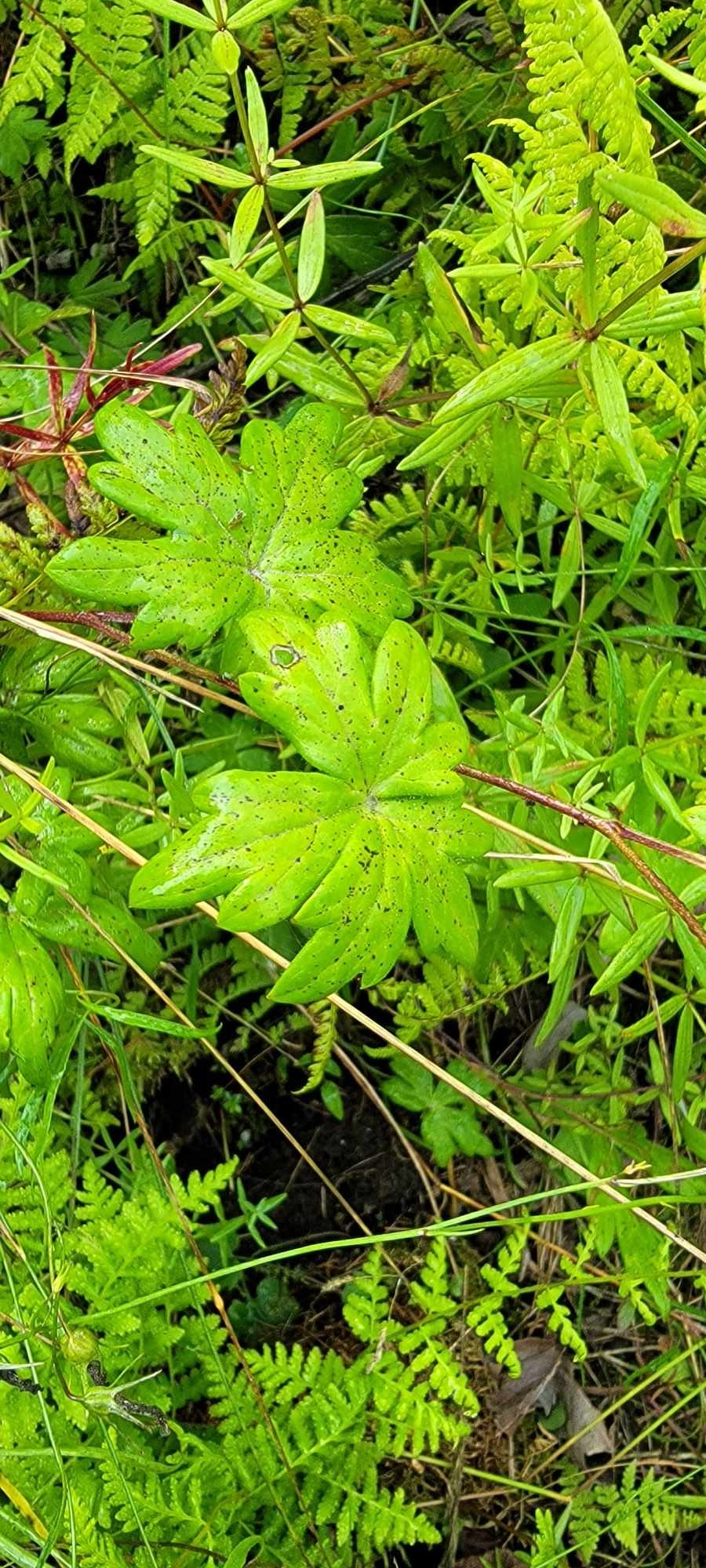
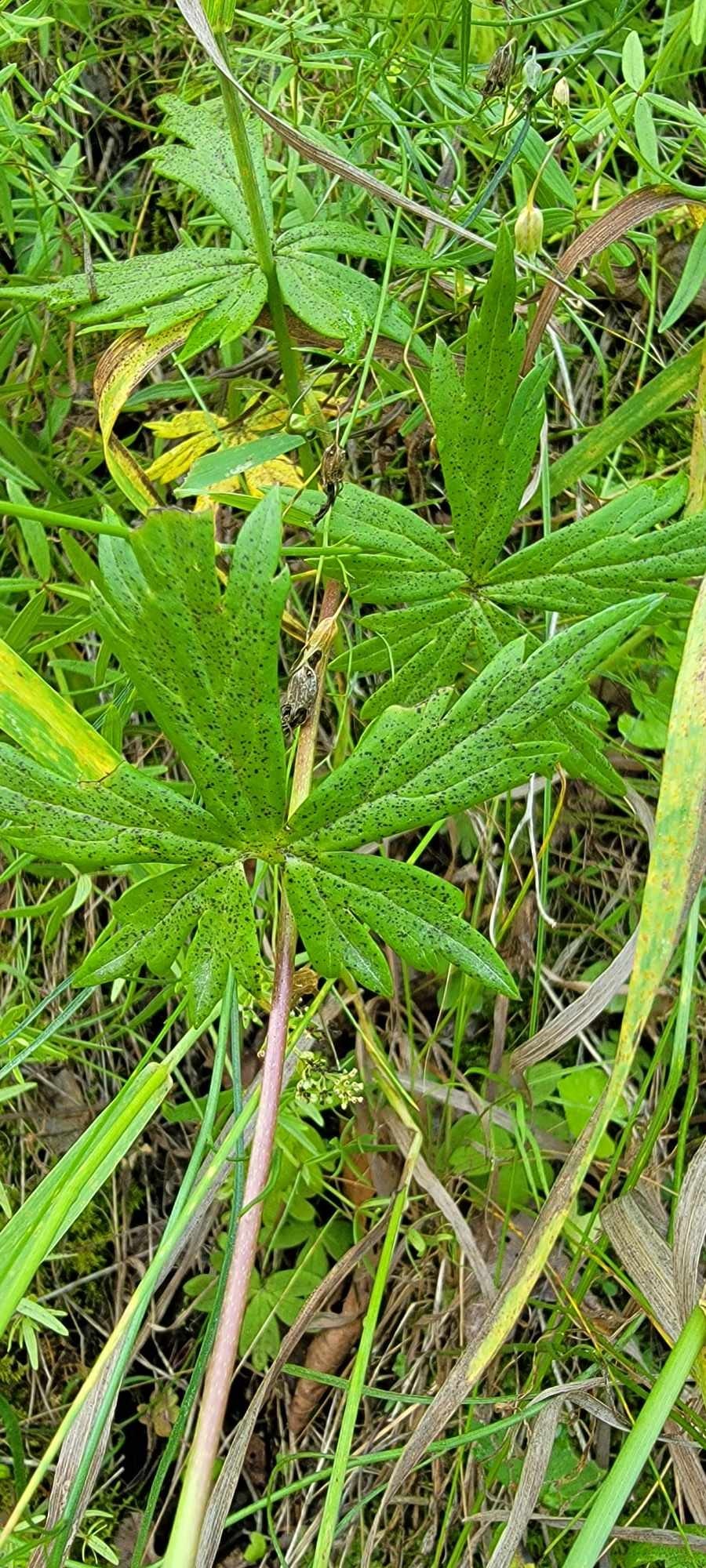
The fruit of the monkshood are these pod-like follicles. (A dry fruit that opens along one side to release seeds.)

If you’ve never been to the Driftless Area in Iowa, you must go there. The Driftless is the land the glaciers missed. Wikepedia describes it as land that was “never covered by ice during the last ice age.” For that reason, “the area lacks the characteristic glacial deposits known as drift. Its landscape is characterized by steep hills, forested ridges, deeply carved river valleys, and karst geology with spring-fed waterfalls and cold-water trout streams.”
They missed words like amazingly beautiful, uniquely stunning, and just plain wonderful. Now that I’ve seen the rare Northern Monkshood in eastern Iowa and shared it with you, I need to discover the next wildflower to hunt.
Editor’s note from Laura Belin: In 2020, Beth Lynch featured another extremely rare wildflower found in this part of the state. Iowa golden saxifrage “grows only in cool, moist microhabitats associated with cold air vents in north-facing rocky cliffs,” also known as algific talus slopes.
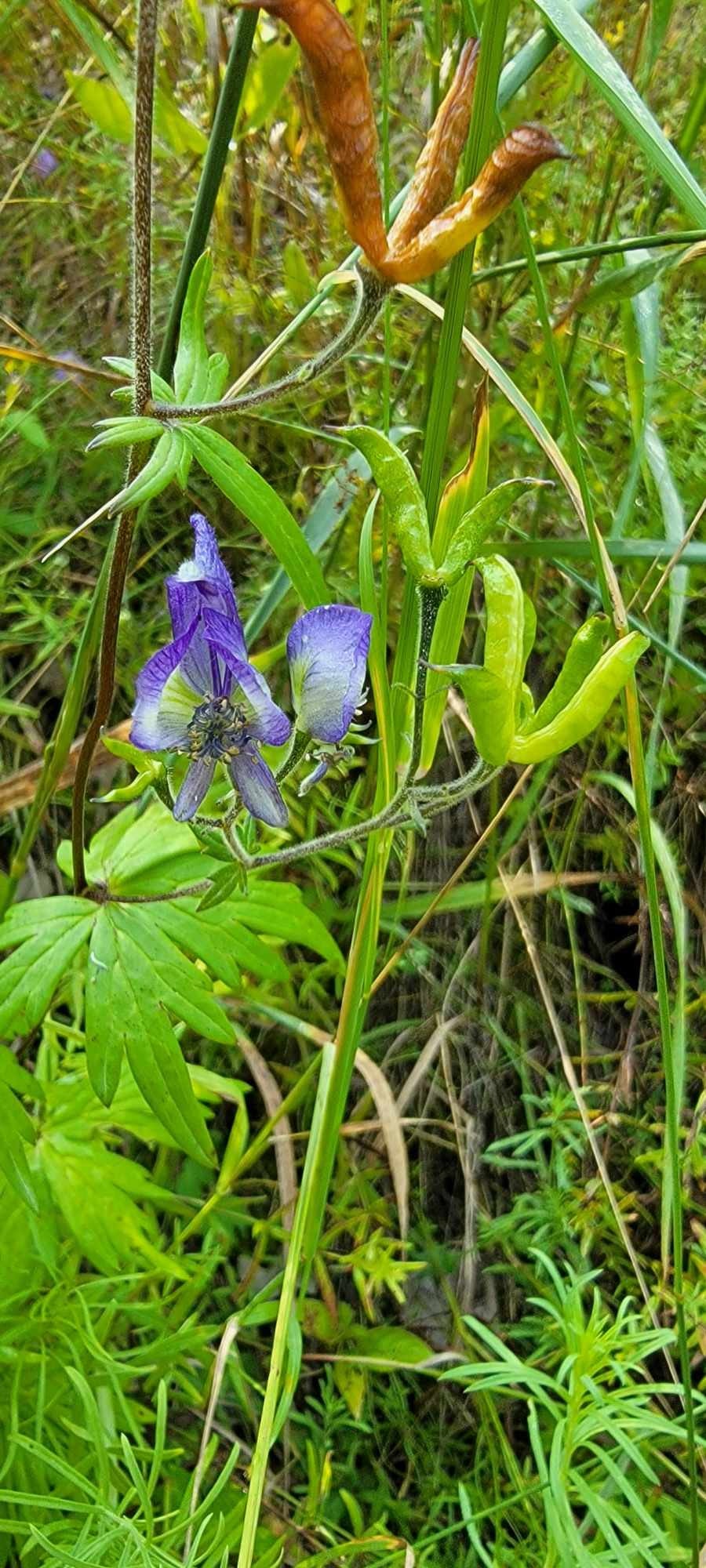
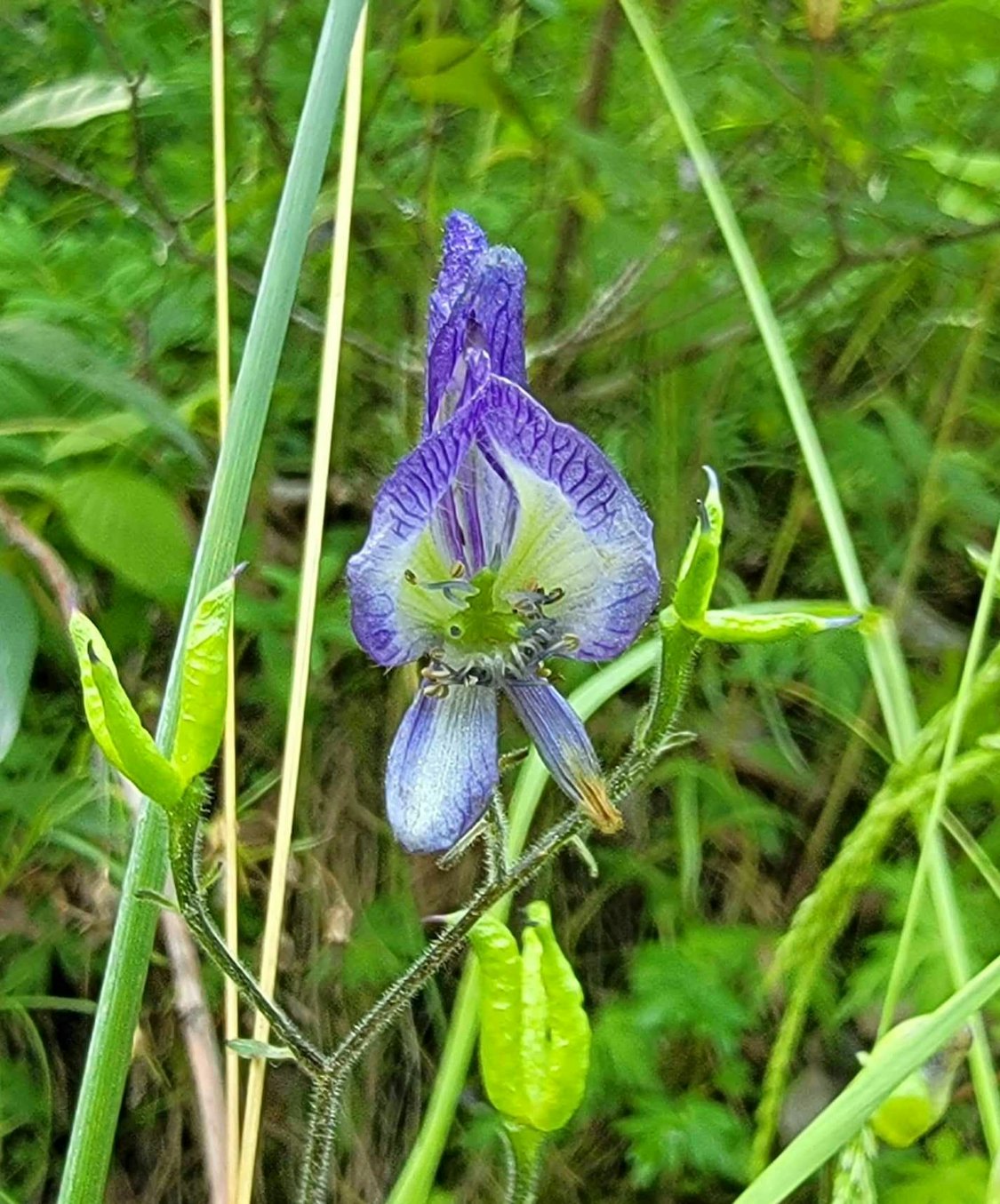


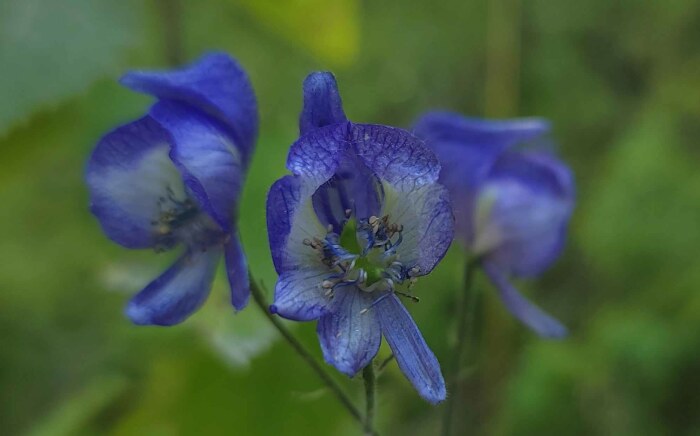
1 Comment
As happy as I am to see these very beautiful photos...
…it is distressing to learn that this species is still so rare and extremely vulnerable. Extinction happens when local populations wink out.
I learned at the Statehouse forty years ago that if an Iowa legislator knew something about Iowa’s native biodiversity and was concerned about protecting it, that legislator could be counted on to know and care about a whole range of environmental issues. A legislator who only expressed occasional concern about whether water was safe to drink when it came out of an Iowa faucet seldom fit that description.
PrairieFan Mon 23 Oct 2:18 PM